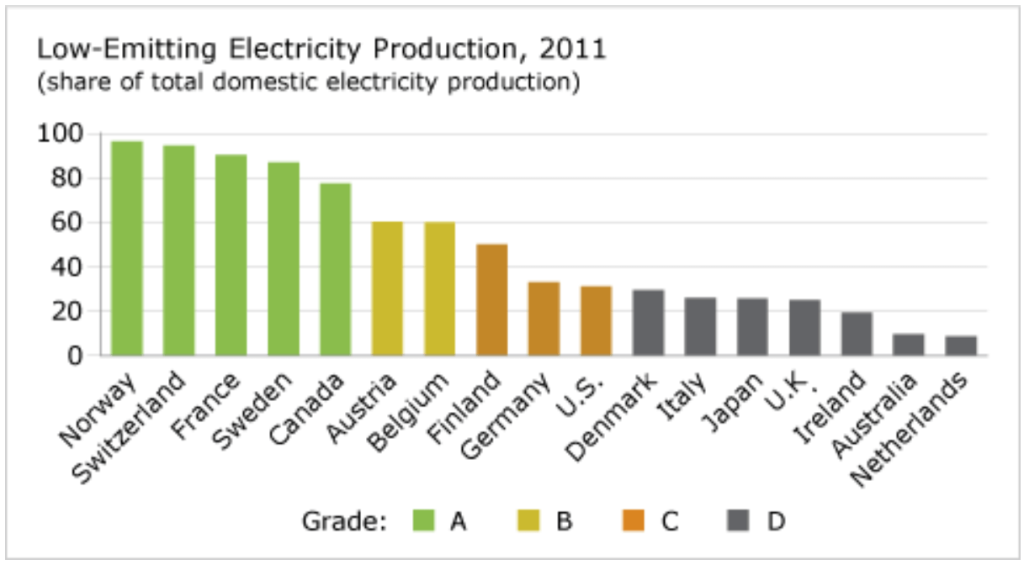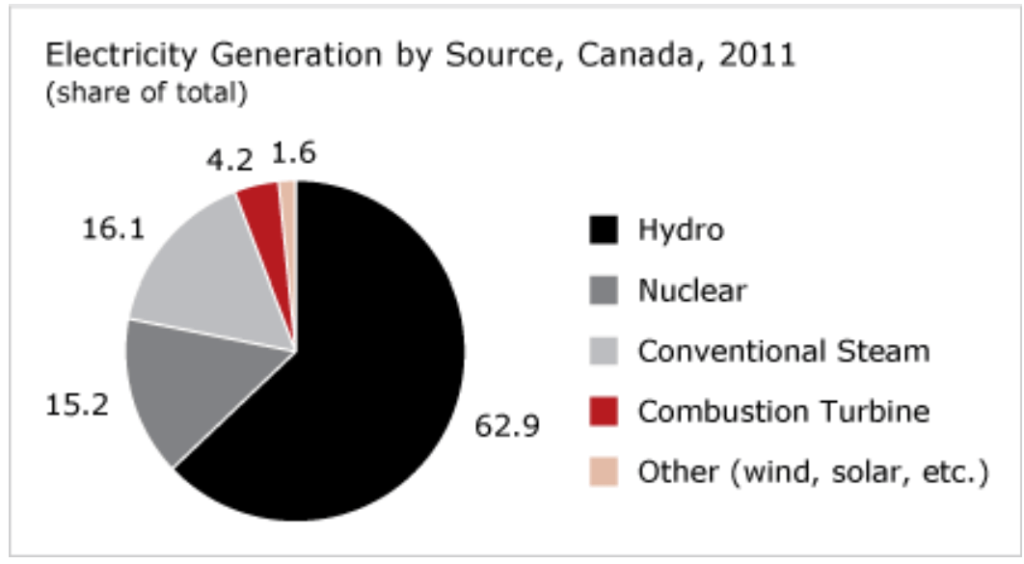Low-Emitting Electricity Production
Key Messages
- Canada ranks 5th out of 17 OECD countries and earns an “A” grade.
- Renewable hydroelectric power contributes 64 per cent of Canada’s total electricity production.
- Canada can further use its renewable energy resources to increase its share of low-emitting electricity production.

Putting renewable and nuclear energy in context
Renewable sources of energy—including wind, tidal, solar, biomass, hydroelectric, and geothermal—produce low amounts of GHG emissions. Nuclear energy is also a low-emitting source of electricity that is gaining acceptance in Organisation for Economic Co-operation and Development (OECD) countries as a sustainable energy source.1
Increasing renewable energy’s share of total energy consumption should be a policy goal to mitigate climate change in Canada and its peer countries.
Is Canada taking a leading role in producing and using renewable energy?
Canada ranks among the top five countries on this indicator and earns an “A” grade, behind Norway, Switzerland, France, and Sweden.
Canada can look to its peers to further increase the share of low-emitting electricity production in total electricity production. Almost all of Norway’s electricity was generated from renewable hydroelectric sources in 2011. In Switzerland and France, over 90 per cent of electricity supply was produced using renewable and low-emitting sources.
Is Canada doing enough to use renewable and low-emitting energy sources of electricity?
Canada has an abundant supply of renewable energy resources, including hydro, wind, solar, forest and agricultural biomass, tidal, and geothermal. In 2011, almost 78 per cent of Canada’s electricity was produced from low-emitting sources (renewable plus nuclear), with nuclear energy contributing 14 per cent. (In Ontario, nuclear power accounts for more than 50 per cent of the electricity generation mix.)
Canada is expected to continue its strong performance in this area. Large hydro developments will continue to be added, particularly in British Columbia, Manitoba, Quebec, and Newfoundland and Labrador. All provinces continue to expand their use of wind power, with Quebec, Ontario, Alberta, and British Columbia showing the strongest growth in wind generation capacity. Solar power is also expanding, particularly in Ontario. Most provinces have policies and programs to encourage more low-emitting electricity generation capacity.

Footnotes
1 Luis E. Echávarri, Nuclear Energy: Towards Sustainable Development, January 2007 (accessed July 14, 2008).

